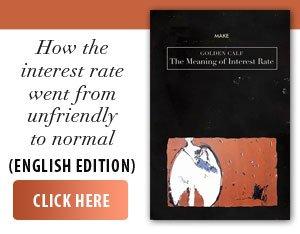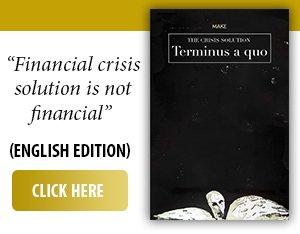The geopolitical and economic storm that is shaping up around the US dollar is taking on unexpected proportions after the recent summit of the Shanghai Cooperation Organisation (ed. - Shanghai Cooperation Organisation - SCO), which took place last week in Tianjin, China. What seemed like a risky game by Donald Trump, intended to constrain China through sanctions and pressure on European partners, is turning into a chain of reactions that are shaking the foundations of the global financial order. If in the past the dollar was the undisputed symbol of American power, today the rise of the BRICS, the increase in the strategic role of the SCO and the rapid movements of some emerging economies show that this balance is beginning to collapse.
China, the target of Trump's sanctions, is not giving in. On the contrary, Beijing is launching a de-dollarization strategy that requires oil, gas, and raw materials to be traded in yuan. Middle Eastern states, Russia, and even other Asian partners are seriously considering this change, and India, frustrated by American pressure, has visibly moved closer to Moscow and Beijing, reducing its holdings of American bonds and increasing its gold reserves. The message is clear: the dollar's supremacy is no longer undisputed.
Especially if we take into account the fact that almost 10 years ago, the International Monetary Fund, led at the time by Christine Lagarde, approved, on November 30, 2015, the inclusion of the yuan - China's national currency - in the basket of special drawing rights (SDRs), with a weight of 10.92%, after the US dollar and the euro, but ahead of the Japanese yen and the pound sterling. The inclusion of the yuan in the SDR basket was effectively implemented on October 1, 2016. According to IMF data, two years ago (2023), the yuan had a weight of 12.28% in the SDR basket.
Following this decision, in September 2018, the Chinese Minister of Commerce, Gao Hucheng, proposed a more intensive use of the Chinese currency in establishing trade with Russia - in the context of the decline of the ruble due to Western sanctions imposed after the invasion and annexation of Crimea - in order to ensure safe and reliable trade between the two states. According to the American and Arab media at the time - CNBC, CNN, Fox News and Gulf News - for China, reducing the influence of the dollar fits well with its ambitions to increase the influence of the yuan and, ultimately, to turn it into a global reserve currency. The sources also mention that in 2018 China had 32% of its foreign exchange reserves of 4 trillion dollars invested in US government debt and wanted to limit its risks of investments in the dollar. In May 2025, following its actions to reduce the risks of investments in the dollar, China had only 23% of its foreign exchange reserves invested in US government debt.
We also mention that in 2022, the Chinese government concluded agreements to expand the use of the yuan in trade relations with Russia, Saudi Arabia, Brazil and even France, a strategic move that helps China shape a more substantial role in the international financial system. Moreover, China has begun establishing a new payment system with Russia, which would circumvent the SWIFT system, by integrating the SPFS (Financial Message Transfer System) in Russia and the CIPS (Cross-Border Interbank Payment System) in China. At the same time, by establishing new digital trading platforms for its currency, China has openly promoted de-dollarization, especially since it has emerged that the yuan has begun to be traded in key financial centers, such as Hong Kong, Singapore and Europe.
• Multipolarity alternatives to the World Bank: the BRICS Development Bank and the SCO Bank
In this context, a central role is played by alternative financial institutions that have consolidated over the past two decades. An emblematic example is the Shanghai Cooperation Organization Interbank Consortium (SCO IBC), created on October 26, 2005 by the decision of the Council of Heads of State of the SCO. The year 2025 marks the 20th anniversary of its establishment, and the anniversary finds this structure more relevant than ever. The SCO IBC was conceived as a mechanism for supporting and financing investment projects in member states and as a platform for financial cooperation between the emerging economies of Eurasia. It includes leading banks: Kazakhstan Development Bank, RSK Bank of Kyrgyzstan, India Infrastructure Finance Company, China Development Bank, VEB.RF of Russia, State Savings Bank of Tajikistan "Amonatbonk", National Bank for Foreign Trade of Uzbekistan and Habib Bank Limited of Pakistan. In addition to these, strategic partners include the Eurasian Development Bank (since 2008), Belarusbank (since 2012) and the Development Bank of Mongolia (since 2016). Together, these institutions not only finance projects, but also create a parallel financial infrastructure, ready to reduce dependence on dollars and provide member countries with a shield from US sanctions. This financial network, complementary to BRICS, paves the way for real alternatives to Western-dominated mechanisms. Recently, at the BRICS Development Bank summit, which took place at the end of July, Brazilian President Luiz Inacio Lula da Silva denounced the US-dominated financial order and called for new development models for the Global South. He stated that 31% of the projects carried out by BRICS received financing in the currencies of the organization's member states, which demonstrates that the bank of this international institution can constitute a viable alternative to the International Monetary Fund and the World Bank, institutions criticized for their political conditionalities.
Regarding this banking system, we also mention that in 2021, the People's Bank of China proposed a plan for "global sovereign digital currency governance" to the Bank for International Settlements, with the aim of shaping global financial norms through its digital currency, the e-yuan.
In parallel, Vladimir Putin presented Russia as a bridge between Asia and Europe, opening new trade and financial corridors, from the Arctic to the Far East. Thus, the Republic of Tatarstan, part of the Russian Federation, was given a strategic role as a trade hub between Moscow and New Delhi, offering compensation mechanisms in rupees and rubles to avoid currency blockages and preparing a joint investment fund in areas such as IT, pharmaceuticals or petrochemicals. The integration of the Mir and RuPay payment systems and the development of the North-South transport corridor, with the Iranian port of Chabahar as a key point, offer concrete solutions to reduce dependence on the dollar and on trade routes controlled by the West.
It is not just the emerging powers that are seeking to move out from under Washington's umbrella. Malaysia, supported by China on its path to full membership of the BRICS, sees this move as an opportunity to consolidate its regional influence and diversify its markets. Even if there is a risk of tensions with the US, the economic argument is strong: access to a market of 3.2 billion people and a shared GDP of over $26 trillion.
All these transformations are set against the backdrop of a harsh reality: the pressure exerted by Trump through sanctions and tariffs has not weakened China, but has accelerated the processes of multipolarization. BRICS and SCO play complementary roles, one boosting financial multipolarity, the other managing regional stability, and together they are paving the way for a global order in which Washington no longer holds the monopoly.
• American financial experts say the dollar will remain dominant in the global financial system
The US dollar will remain, for the foreseeable future, the dominant currency in the global financial system, despite challenges from some states and regions and the recent decline in its value, because there is currently no viable replacement, American financial experts say. However, its influence is gradually diminishing, a process that will probably lead to a multipolar financial system, not to the complete dethronement of the dollar, according to the international press.
According to the International Monetary Fund, in the first quarter of this year, the US dollar held about 58% of international foreign exchange reserves, down slightly from the fourth quarter of the previous year, while the share of the euro rose to 20%, from 19.8% in the last quarter of 2024. The share of holdings in the Chinese renminbi (yuan) decreased slightly, to 2.1%. According to SWIFT data, last year, about 50% of cross-border payments were denominated in US dollars, 22% in euros, 6.5% in pounds sterling and 4.7% in renminbi - as transactions in the same currency, writes Trade Finance Global. On the other hand, the US dollar is by far the main currency in international trade, being found in 88% of cases in at least some of the transactions carried out in April 2022, according to the Bank for International Settlements.
The BRICS group - the economic bloc formed by Brazil, Russia, India, China and South Africa, which was recently joined by Egypt, Saudi Arabia, Argentina, Ethiopia, Iran and the United Arab Emirates - is at the center of the de-dollarization movement, notes The Guardian in an article published in mid-July. The publication points out that BRICS has already surpassed the G7 in terms of purchasing power parity (PPP), amplifying their demands for a more balanced and fairer global financial system. The cited source shows that BRICS member states have intensified their bilateral trade in local currencies, thus reducing the role of the US dollar in transactions. For example, India and Russia exchange oil in rupees and rubles, and China and Brazil use direct settlement arrangements in yuan and reais, with Russia's exclusion from the SWIFT system after its invasion of Ukraine having the effect of accelerating these transactions, the source also notes.
Economist Jeffrey Sachs, a former special adviser to the UN Secretary-General, has frequently commented on Washington's "weaponization” of the dollar, using it as a weapon through financial sanctions and trade barriers to impose its geopolitical agenda, a context in which countries from the global south are fighting back, writes The Guardian.
According to the aforementioned publication, among the reasons for the new movements in the global financial scene are Donald Trump's unpredictability and aggressive tariffs applied to members of NATO, the European Union and other countries. The dominance of the US dollar is based on trust - the true foundation of any currency - which is now eroding. What we are seeing is not a collapse, but a transition. A multipolar monetary system could emerge in the next few years, with regional blocs based on national or collective currencies, from the Chinese yuan and the Indian rupee, to a possible African Eco currency and financial instruments backed by the BRICS, according to the British publication, according to The Guardian.
The United States recently doubled tariffs on Indian exports to 50%, a measure that came into effect on August 27, 2025. The Trump administration justified the decision by New Delhi's continued imports of Russian oil, which has amplified trade tensions and put pressure on the Indian economy. As a result, the government in New Delhi is looking for alternative markets and developing support programs for affected sectors, according to international media, the publication writes.
• Central banks are reducing their dollar holdings
The trend of more and more countries to reduce their dependence on the dollar is reflected in several ways, the most visible being the decision of central banks to reduce the weight of this currency in their reserves, in favor of alternatives such as gold. According to Seeking Alpha, the BRICS countries are openly discussing the creation of a currency - or even several currencies - to compete with the US dollar. According to the cited source, in recent years central banks have bought gold in record quantities - in the hundreds or even thousands of tons - a trend led by China, India and other major emerging economies. In parallel, the BRICS countries are considering the creation of an alternative currency, possibly backed by gold or oil, with the aim of challenging and, ultimately, dethroning the US dollar as the main global reserve currency. According to Seeking Alpha, the dollar remains the dominant currency globally, supported by US capital markets, considered the most liquid and deep in the world. However, the de-dollarization trend is evident and, while not a sudden change, marks a gradual process that is difficult to reverse.
At the same time, Ed Yardeni, founder of Yardeni Research, believes that China's central bank digital currency (e-CNY) project, part of a broader de-dollarization effort, has little chance of challenging the dollar's global dominance, notes Investing.com.
e-CNY is the world's largest central bank digital currency pilot project, and the People's Bank of China has plans to expand both domestically and globally. In June, six foreign banks - including Singapore's UOB and South Africa's Standard Bank - joined the CIPS interbank payments system, which Beijing sees as a rival to the SWIFT network. According to Governor Pan Gongsheng, the goal is to strengthen a "multipolar monetary system,” and China is betting that "Trump's tariff chaos” will prompt more countries to join the de-dollarization process, notes Investing.com.
"It is unlikely that e-CNY will be the dollar killer that Xi hopes,” says Yardeni, who believes that despite China's grand ambitions, structural weaknesses in its economy will limit global confidence and adoption of the digital currency.
Yardeni believes that "the yuan is punching well below its weight,” meaning that its international role is much smaller than the size of the Chinese economy would suggest. The main reason is the reluctance of the Beijing government to make the currency fully convertible, reflecting President Xi Jinping's tight control over the financial system.
Another obstacle is lack of trust. "In the absence of an independent monetary authority, why would global institutions trust the People's Bank of China's e-CNY?” Yardeni asks, highlighting concerns about transparency and governance in China's economic statistics.
According to Investing.com, China's domestic economic challenges - from housing market pressures and local government debt to weak consumer demand - are further weighing on the digital yuan credibility.
Yardeni states that "China's plans to rival the dollar start by putting the cart before the horse,” emphasizing that the strength of a digital currency depends primarily on economic fundamentals, not technology.
• JP Morgan: The dollar's decline in global trade and foreign exchange reserves should not be confused with dedollarization
JP Morgan estimates that the US dollar will retain its dominance in the global financial system for decades, despite the growing tensions between the BRICS and the United States, notes Crypto Rank.
"The dollar's role in global finance and its implications for economic and financial stability are supported by deep and liquid capital markets, the rule of law and predictable legal systems, a commitment to a free-floating regime, and the proper functioning of the financial system for dollar liquidity and institutional transparency,” JP Morgan analysts said.
In their opinion, a significant erosion of the dollar's dominance is likely to take decades from now, and the dollar's decline in global trade and overall foreign exchange reserves should not be confused with de-dollarization. Analysts also believe that the private sector's confidence in the dollar as a store of value seems unquestionable, and the dollar remains the most widely used currency by many measures.
Ted Jenkin, co-founder and CEO of oXYGen Financial, said, also quoted by Crypto Rank: "If you look at global trade, which is another measure of the dollar's role as a medium of exchange, except for Europe, the dollar is by far the most widely used currency worldwide.”
Hong Cheng, head of fixed income and currency analysis at Morningstar, says it is premature to worry about the dollar losing its status as the global reserve currency. "Even if it were to happen, it would take many years for that to become a reality,” the analyst told Al Jazeera.
Experts believe, however, that a realistic scenario may involve a multipolar monetary system, in which the dollar shares its role with other major currencies, including China's renminbi.
"It is possible that we are moving towards a multipolar system of reserve currencies, in which currencies such as China's renminbi take on a more important role. However, there is no clear alternative currency," said Rachel Ziemba, a senior fellow at the Center for a New American Security, quoted by Al Jazeera.
Even if such a transition were to occur, it would take decades, the publication also notes.
• Europe's positioning, decisive for the dedollarization process
And even if the transition will not be quick, but likely long, the direction is clear: the world is moving away from the dollar. If Beijing and New Delhi coordinate their actions, if Russia strengthens its Eurasian ties, if states like Brazil and Malaysia raise their voices against American financial hegemony, the dream of dollar dominance will melt like a house of cards.
In all this architecture, only one obstacle remains: the role that Europe will choose to play, or rather its positioning towards one camp or another. Trump's dangerous tariff game and the trade agreement imposed on the European Commission, but not yet agreed by the Strasbourg Parliament, seem to push Europe into the China-dominated camp. Unfortunately, the Europeans lost their credibility when Ursula von der Leyen traveled to Beijing this summer to negotiate an agreement with China, but upon her return to Brussels chose to accept Donald Trump's conditions. The EU's position remains very important, and Ursula von der Leyen's speech today in the European Parliament, in which she will present the State of the Union and the directions to be followed, may represent a milestone in this struggle between the BRICS and SCO, on the one hand, and the USA, on the other.
The economic reset proposed by President Donald Trump in the first half of 2025, based on protectionism and the dismantling of global interdependencies, risks being exactly the catalyst that the globalists need to impose their own version of the reset. If the USA ceases to be the world's consumer market, if financial flows and foreign aid collapse, many states will find themselves in a crisis of survival. At that point, the solution that has been prepared for years - a global digital currency and a centralized economic order - may be presented as the only way out.
American financial experts have told CNBC, CNN, Fox News and Zerohedge that the IMF, the World Bank, and the World Economic Forum in Davos, as well as trillion-dollar investors like BlackRock and Vanguard, will soon court the BRICS, just as Western states are courting them when it comes to creating a centralized world economy. The sources cited claim that the financial elites want an economy that has a global cashless system, a global digital currency built around a basket of CBDCs (central bank digital currencies), the monitoring by artificial intelligence of all financial records.
From the above, we note that despite having the best cards in his hand, the dangerous game started by Donald Trump at a global level seems to be backfiring. In an attempt to corner China, the US president has set off chain reactions that could bury the dollar's supremacy forever. Inflation, huge debt costs and loss of control over global markets could mark the end of a century of American financial dominance. And the world, witnessing a silent but deadly economic war, is witnessing the emergence of a new era, in which multipolarity is no longer a theoretical scenario, but a reality taking shape before our eyes.




















































